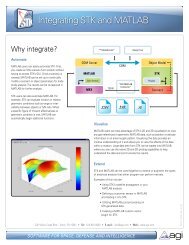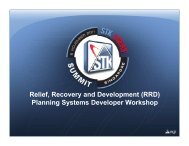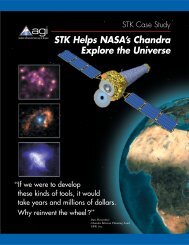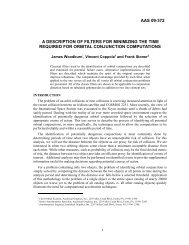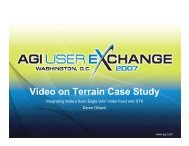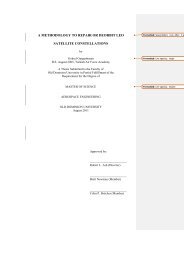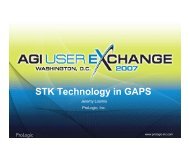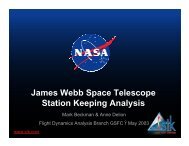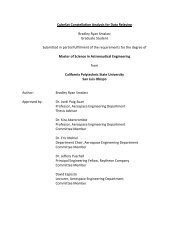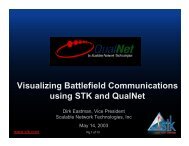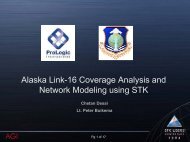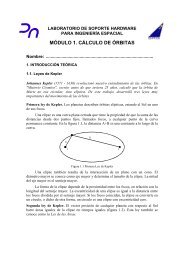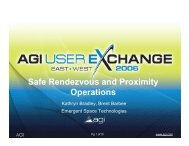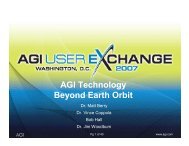SPACE WEATHER - AGI
SPACE WEATHER - AGI
SPACE WEATHER - AGI
- No tags were found...
Create successful ePaper yourself
Turn your PDF publications into a flip-book with our unique Google optimized e-Paper software.
Section I: Residual Atmosphere Effects6. References© SSS Educational Series 2012[1] The Upper Atmosphere. The Space Environment and Survivability. Walterscheid,R. L. 1999, Space Mission Analysis and Design, pp. 207-212.[2] Hastings, D. and Garret, H. Spacecraft Environment Interactions. s.l. : CambridgeUniversity Press., 2004.[3] Spacecraft Interactions with the Space Environment. Tribble, A. C. Reno. : AIAA33rd Aerospace Sciences Meeting and Exhibit., 1995.[4] Atomic Oxygen Undercutting of Long Duration Exposure Facility Aluminised-Kapton Multilayer Insulation. De Groh, et al. 4, s.l. : Journal of Spacecraft andRockets., 1994, Vol. 31, pp. 656-664.[5] Preliminary Investigations into UHCRE Thermal Control Materials. Levadou, F. M.et al.. 1992.[6] The Effect of Atomic Oxygen on Altered and Coated Kapton Surfaces forSpacecraft Applications in Low Earth Orbit. Rutledge, S. and Mihelcic, J. 1990.[7] Hedin, A. E. Extension of the MSIS Thermosphere Model into the Middle andLower Atmosphere. Journal of Geophysical Research. Vol. 96, pp 1159. 1991.[8] Owens, J. K. NASA Marshall Engineering Thermosphere Model-Version 2.0.NASA/TM−2002-211786. 2002.[9] Hedin, A. E. et al. Revised Global Model of Thermosphere Winds Using Satelliteand Ground-Based Observations. Journal of Geophysical Research. Vol. 96, pp7657-7688. 1991.[10] Bilitza, D. International Reference Ionosphere 2000. Radio Science. Vol. 36, pp261-275. 2001.[11] Nava, B. et al. A new version of the NeQuick ionosphere electron density model.Journal of Atmospheric and Solar-Terrestrial Physics. Vol. 70, pp 1856-1862, 2008.7



